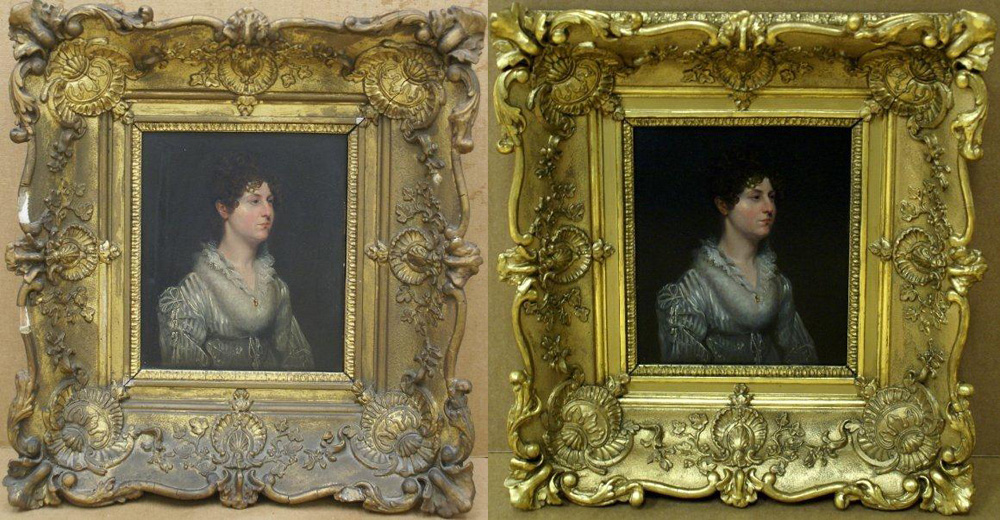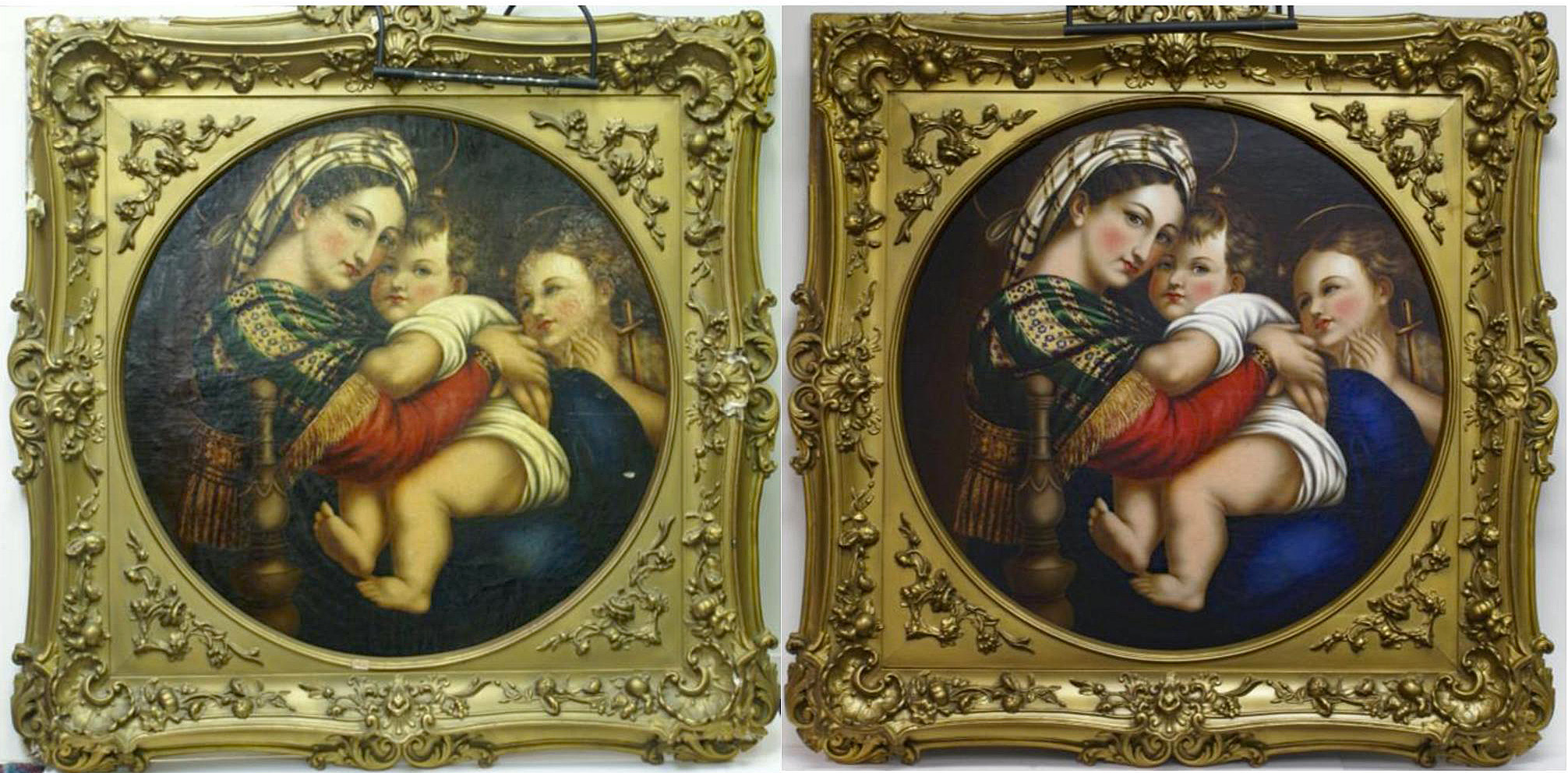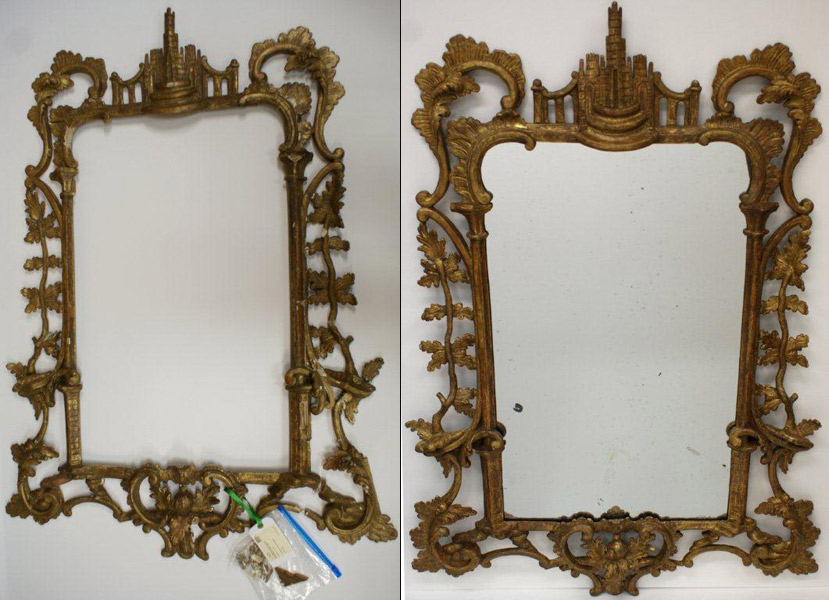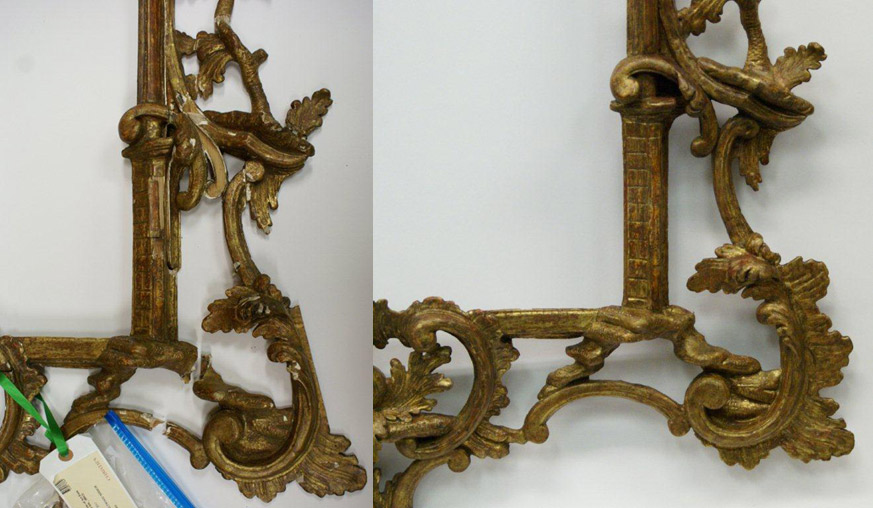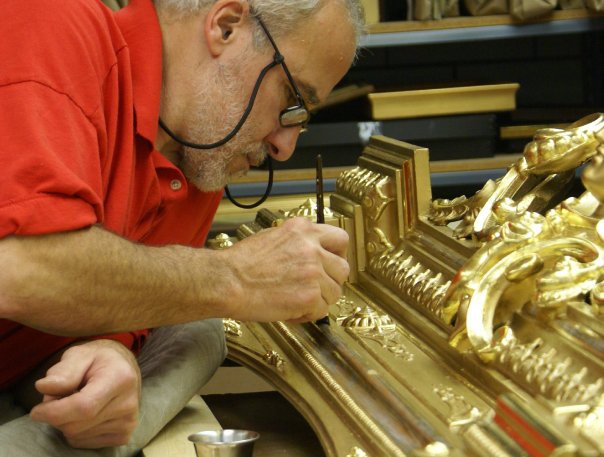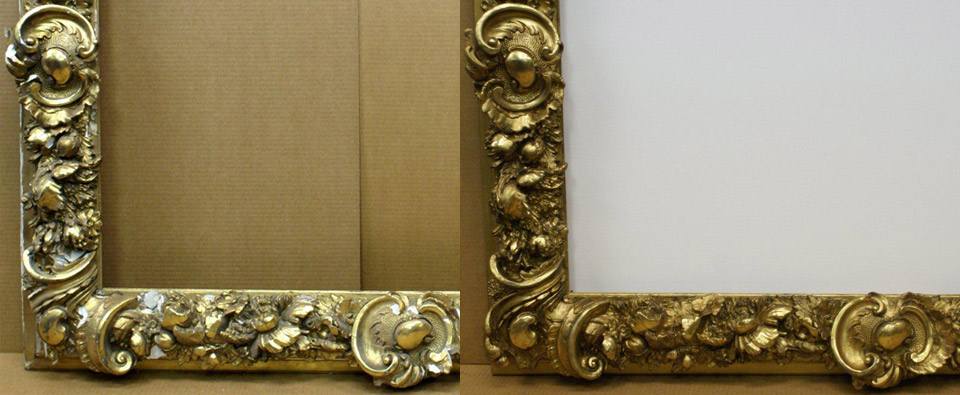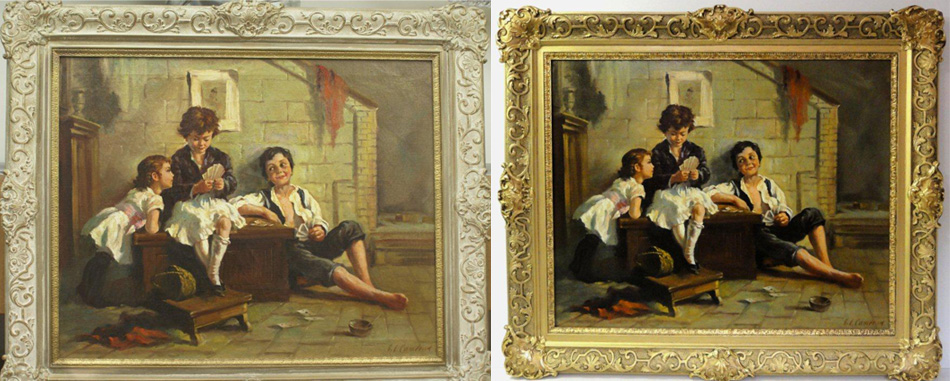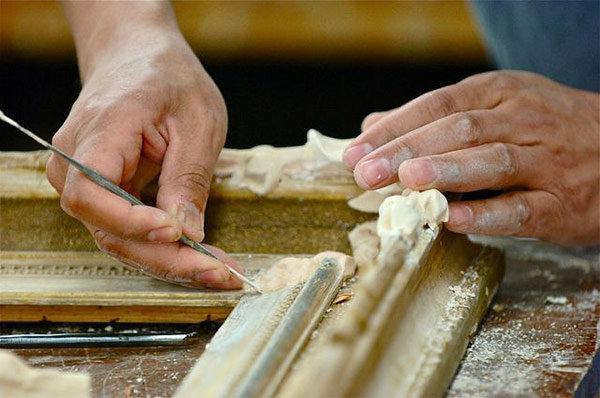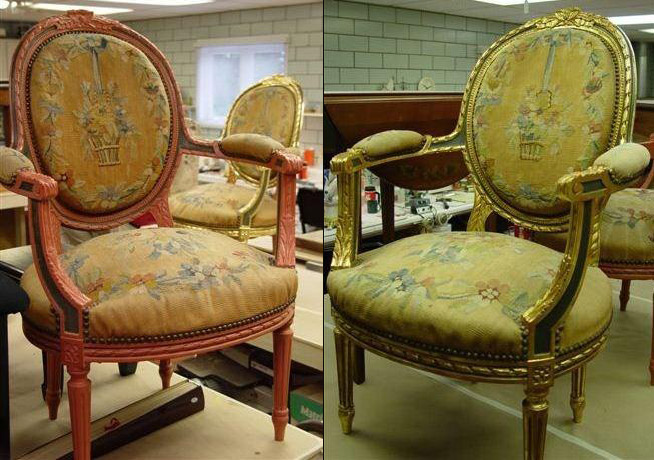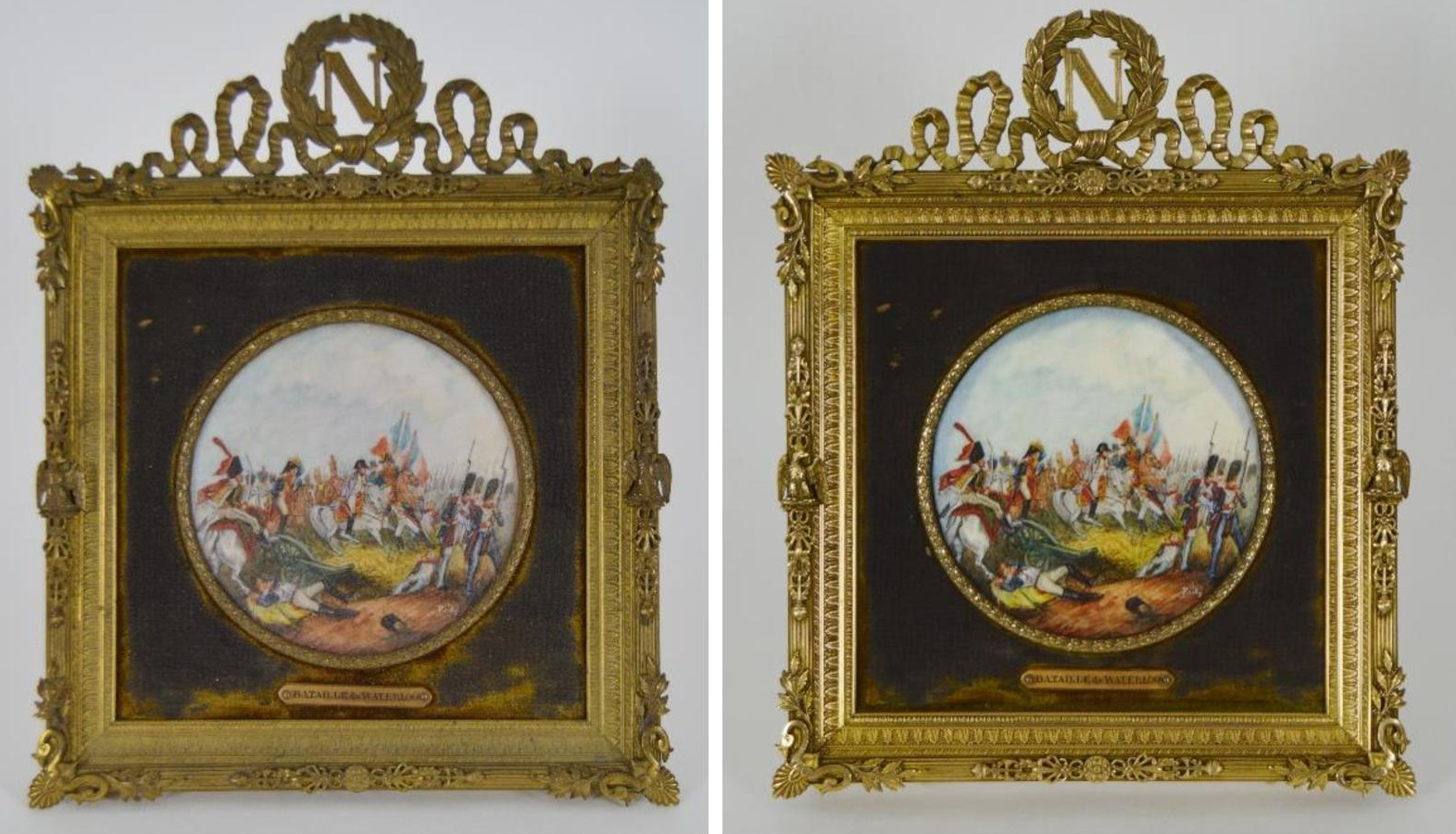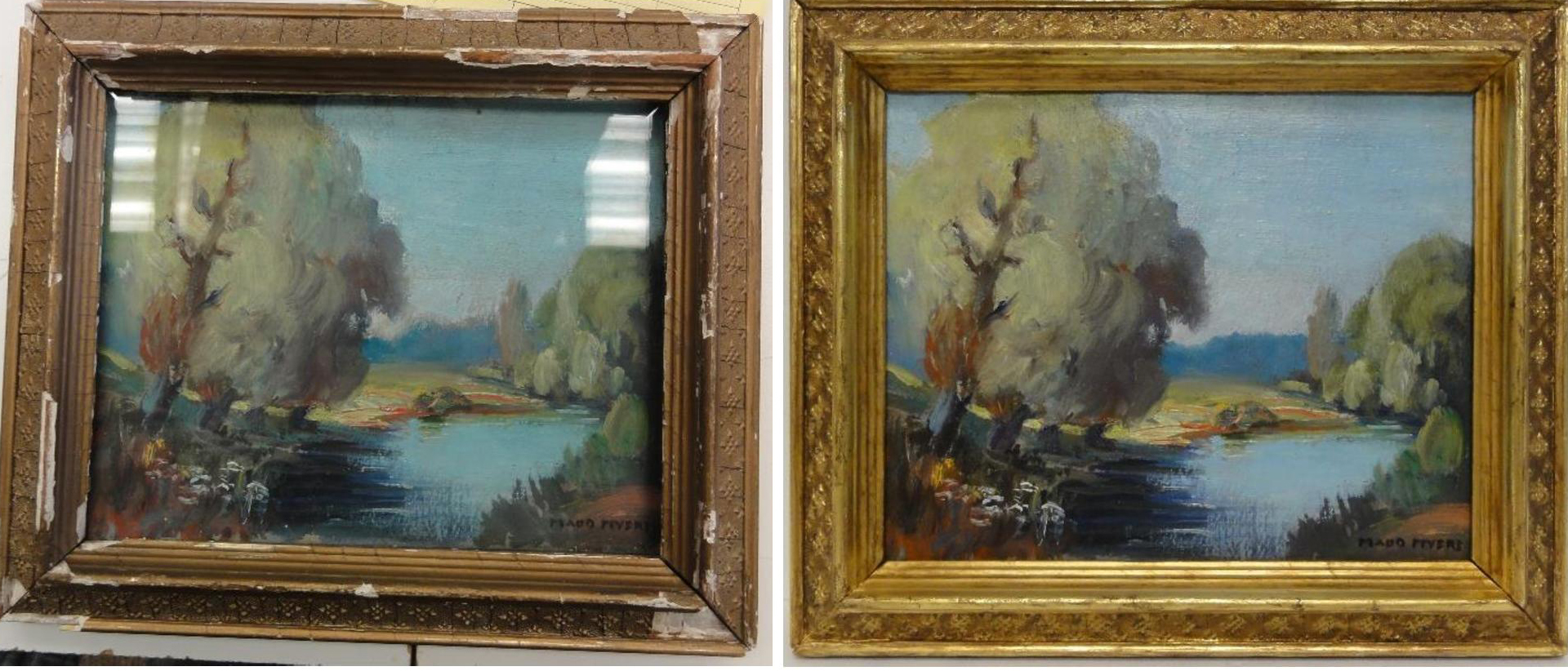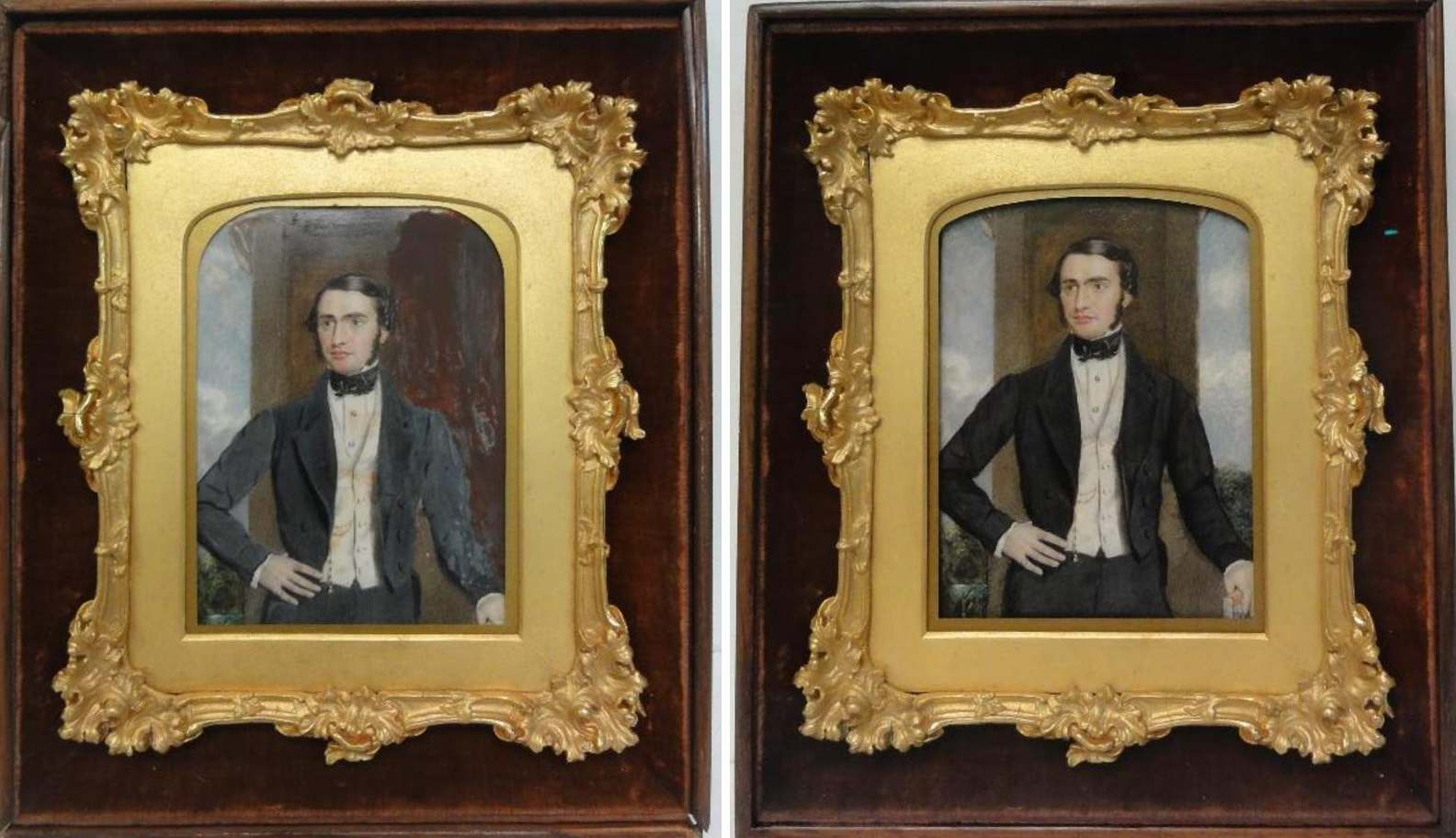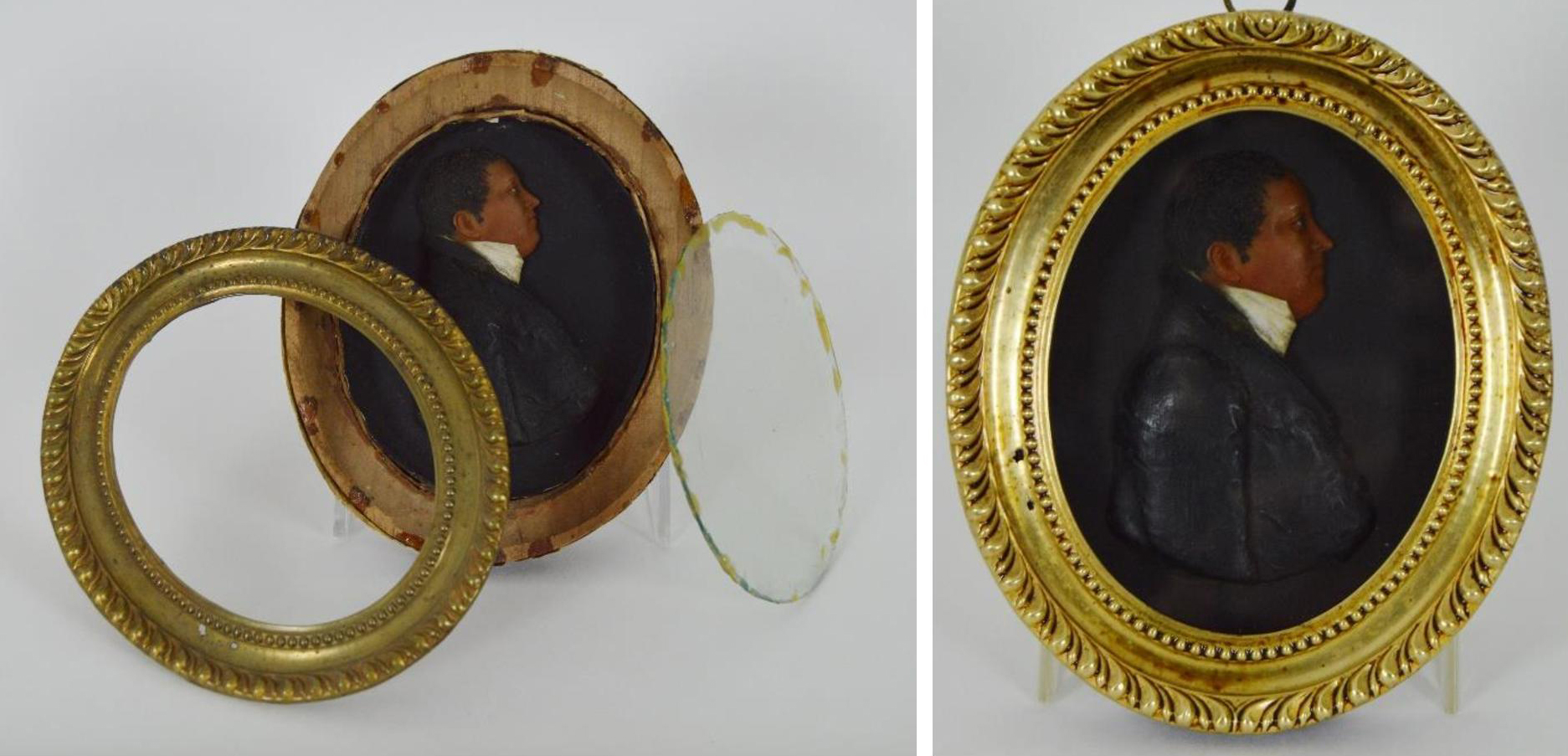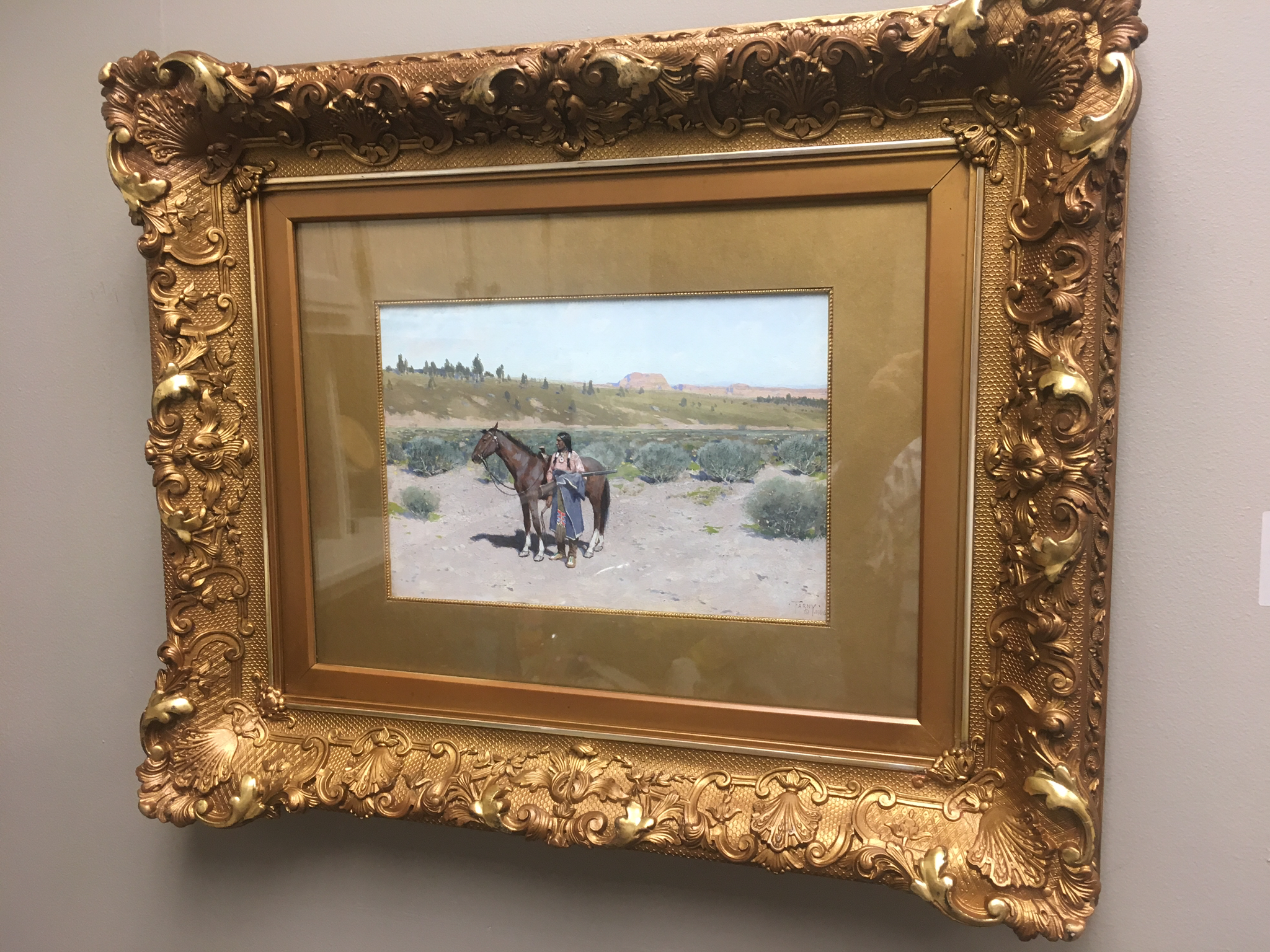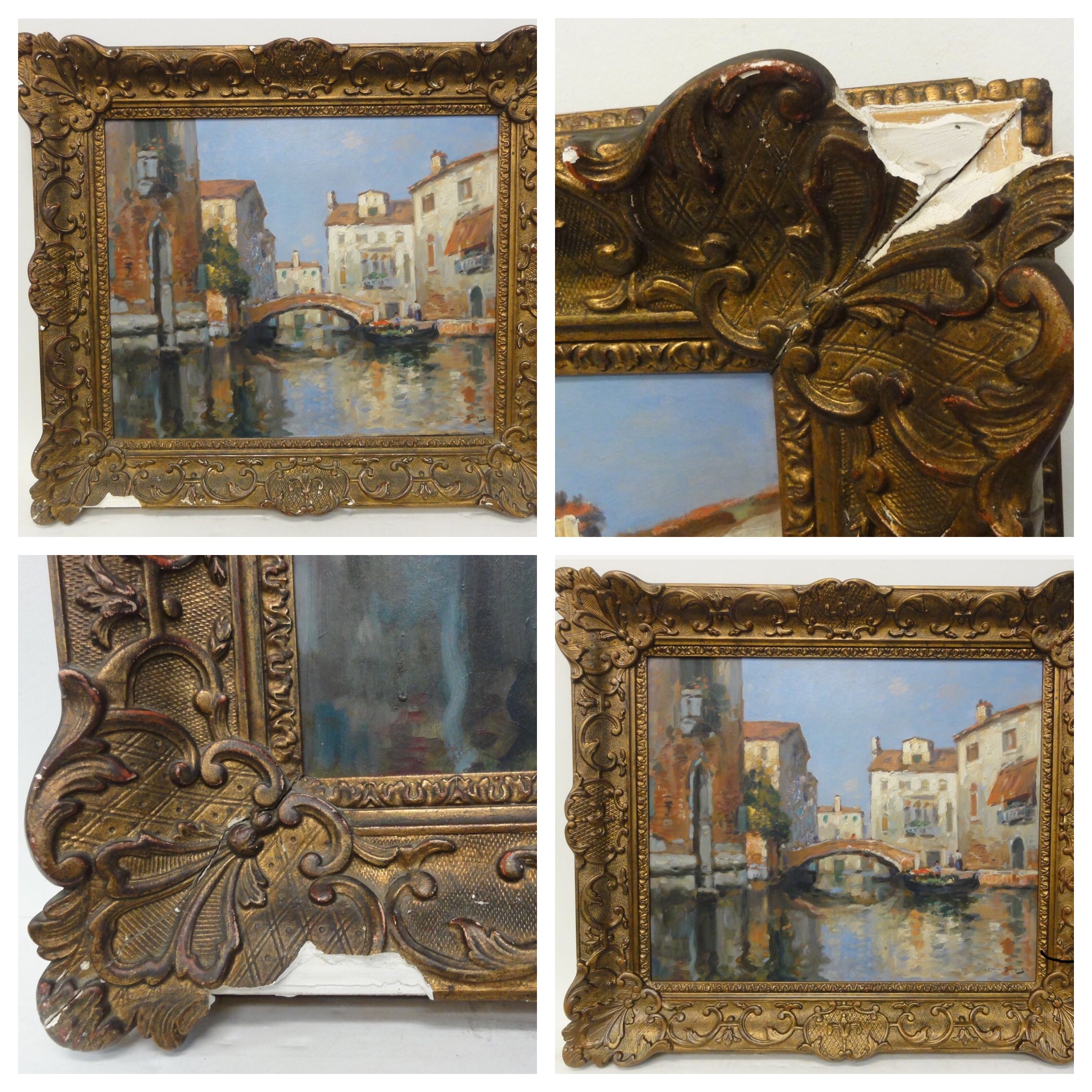Protecting Gold Leaf
The appearance of genuine gold leaf that has been properly applied and finished is exquisite. Few decorative finishes compare to its metallic luster, quality and measure of good taste. Science suggests that gold was first found and processed as early as 6000BC. The application of gold leaf flourished in Ancient Egypt, where it was used to embellish symbols of the Gods. Over the years, little has changed in the way in which gold leaf is manufactured, applied or cared for.
Properly cared for, genuine gold leaf will last indefinitely. It should not be covered with shellac or varnish, while on the other hand, composition or metal leaf requires a coating or sealant to prevent tarnish and discoloration.
Special care should be taken when cleaning gold leaf to prevent the reactivation of the size or glue that was originally used to attach the gold leaf to the surface. Wiping a gold leaf frame that has been water gilded with a wet cloth, may cause the rabbit skin glue that is in the gesso or clay under the leaf to soften and release the gold leaf itself. This is apparent on many early ornate gold gilt frames, where the finish is worn or missing along the inside bottom edge from repeated dusting and cleaning with a damp cloth. The best and safest method to dust a gold leaf frame is to use a dry and soft long-haired brush and a controlled light vacuum. Clean make-up brushes work will for routine dusting.
Many old gold leafed frames have unfortunately been “touched-up” or entirely “re-gilded” with bronze or gold powder paints. Most often, these paints will darken and discolor with age, causing the surface to lose its brilliant gold luster and appear somewhat dull. Our experienced conservators can usually remove most or all of the overpaint and re-expose the original gold leaf finish.
